
Japanese tattoo sleeve by horihide_david. japaneseink japanesetattoo irezumi tebori c
Donburi Sōshinbori - The Japanese full body tattoo without the chest opening; Gakoubori - The single or combination of filler 'pictures' used to flesh out and frame the whole piece. Most common examples are waves, fire, wind, and clouds. Gobu - A half sleeve arm tattoo that starts at the shoulder and goes to just above the elbow join.

50 Cool Japanese Sleeve Tattoos for Awesomeness
6. Japanese Tattoo Meanings. 7. Cherry Blossom Tattoo. 8. Koi Fish Tattoo. Koi fish tattoo designs a cultural symbol for overcoming adversity because with its ability to climb waterfalls that have strong currents it is said that it persevered and succeeded.
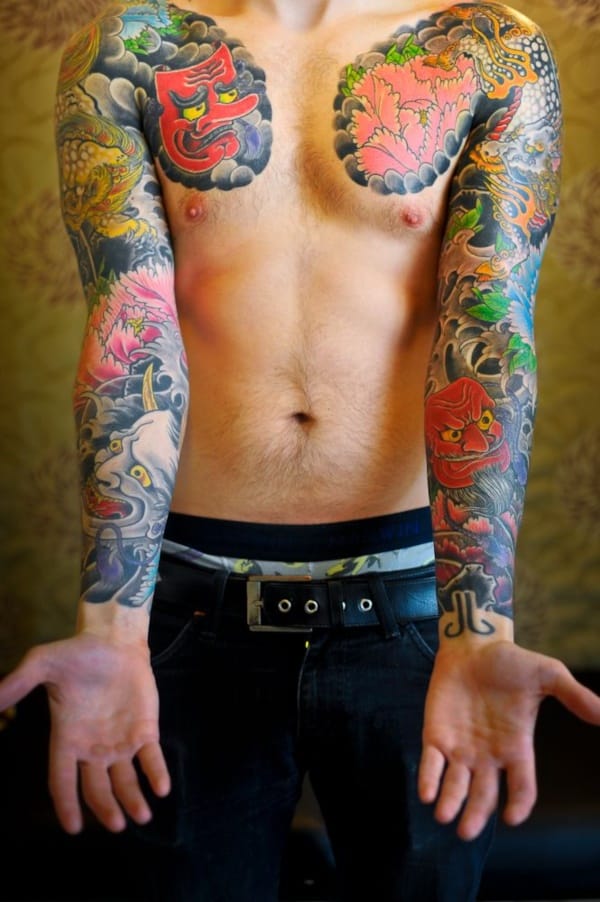
50 Cool Japanese Sleeve Tattoos for Awesomeness
In the Japanese tattoo lexicon, there are a few sleeve variations, all designed with being covered in mind. A nagasode is a full sleeve Japanese arm tattoo, the gobu is a half sleeve tattoo running to just above the elbow, and the shichibusode features 7/10 sleeves, as if the shirtskeeve has been pulled up to mid forearm.

Japanese Sleeve Tattoo Ideas Best Tattoo Ideas
In the 18th century, Japanese tattoos underwent yet another transformation. Due to the prevalence of the colorful and pictorial Ukiyo-e woodblock print, tattoos rendered in this style became popular among groups of people with lower social statuses, like laborers, peasants, and even gangs.Given its ties to the lower class and its long and unsavory history, Irezumi was eventually outlawed in.
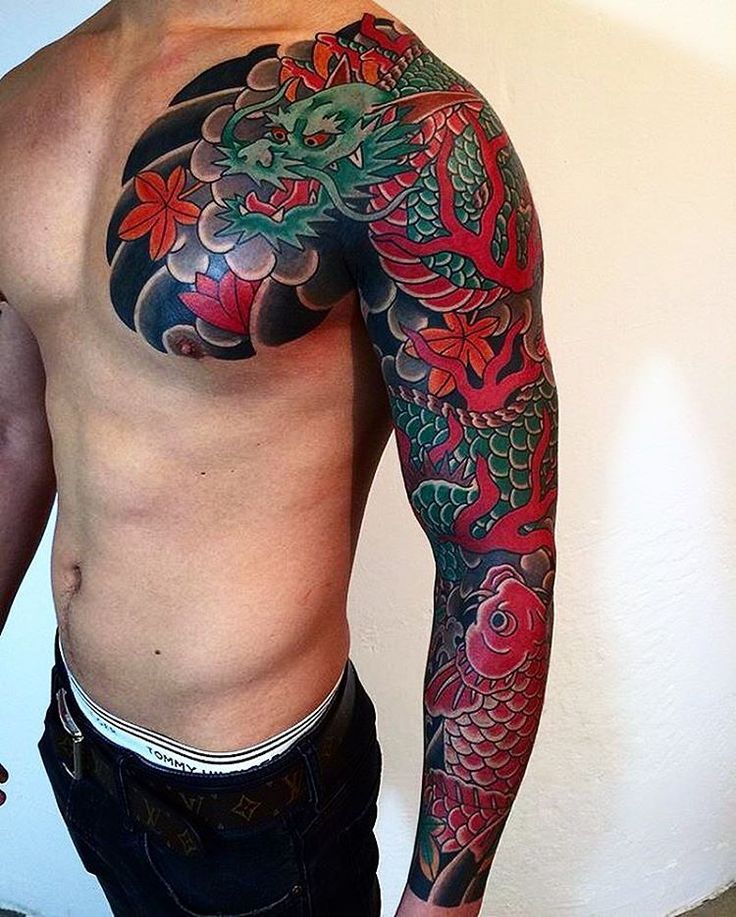
Japanese Sleeve Tattoos Designs, Ideas and Meaning Tattoos For You
Kubu (nagasode) - tattooed area started from chest panel (Hikae) and goes all the way down to a wrist. The term 'nagasode', which means "long sleeves," is also used to refer to shirts. Nagasode irezumi covers the entire arm and ends at the wrist. There are two lengths of sleeve: kubu and tobu. Kubu ends before the wristbone, while.
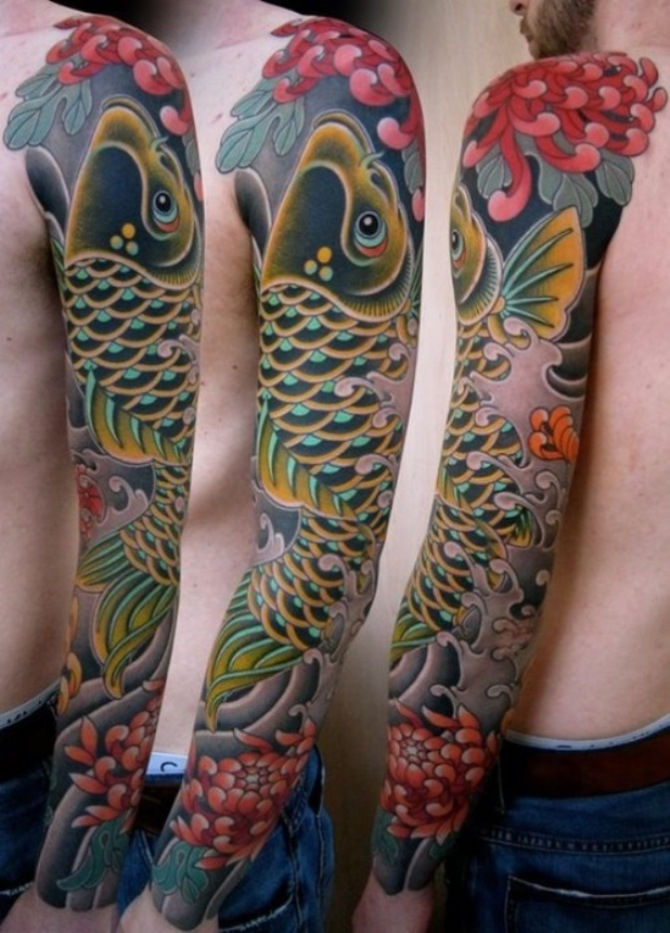
200+ Traditional Japanese Sleeve Tattoo Designs For Men (2019) Dragon, Tiger, Flower Tattoo
Japanese tattoo style, also known as Irezumi, Wabori, or Harimono, is a traditional art form with deep cultural roots and a rich history. Originating in Japan, this style features bold motifs, detailed imagery, and vibrant colors that capture the essence of its meaningful symbolism. Drawing inspiration from historical events, mythology, and.

Pin on Japanese Tattoos
The Japanese dragon tattoo is one of the most sought-after designs in the tattoo parlor. It could be because of the vibrant designs or what a dragon tattoo symbolizes. Common meanings would be wisdom, power, strength, good luck, prosperity, longevity, and even more.

200+ Traditional Japanese Sleeve Tattoo Designs For Men (2019) Dragon, Tiger, Flower Tattoo
This Japanese Demon tattoo is one of the most popular modern Japanese tattoos. This sleeve design is of the Hannya mask that represents a jealous female demon that has a learning mouth, sharp teeth and metallic eyes. It also has devil-like horns. It is a metaphor for the pain and rage of the women of that society.

200+ Traditional Japanese Sleeve Tattoo Designs For Men (2019) Dragon, Tiger, Flower Tattoo
Japanese sleeve tattoos are often perceived subjectively, as each wearer often displays a uniquely-put series of feelings using the illustrations. However, each Japanese sleeve tattoo often gravitates towards bravery, feelings of happiness, and resilience at the end of the day. Many obtain Japanese sleeve tattoos to become more familiar in.

Traditional Japanese Sleeve Tattoo Tatouage japonais, Tatouage japonais bras, Tatouage manchette
In Japanese tattoo culture, "sleeve" refers to a large tattoo or collection of smaller tattoos that cover a significant part of the arm, typically falling into three categories: full sleeve, half sleeve, and quarter sleeve. Full sleeve tattoos cover the entire arm, usually from the shoulder to the wrist. Half sleeve tattoos typically span.

Japanese Samurai Sleeve Sleeve tattoos for women, Black and grey tattoos, Black tattoos
Rule no.2 - Japanese tattoos need to have a big design, and usually take large body areas like the chest, the sleeve arm area, the upper and lower back, the upper thigh and the buttocks area, etc. Rule no.3 - Japanese tattoos need to have traditional themes, symbols, and characters from myths and legends.

A imagem pode conter 1 pessoa, closeup Japanese sleeve tattoos, Koi tattoo sleeve, Japanese
The Japanese demon and Geisha sleeve tattoo depict a mask-like appearance, symbolizing the dual nature of humans. While it evokes a sense of melancholy and eeriness, the tattoo can be viewed as an abstract art form and can be adapted as full sleeve, half sleeve, or arm sleeve tattoos. Japanese Full Sleeve Flower Tattoo With Beautiful Colors
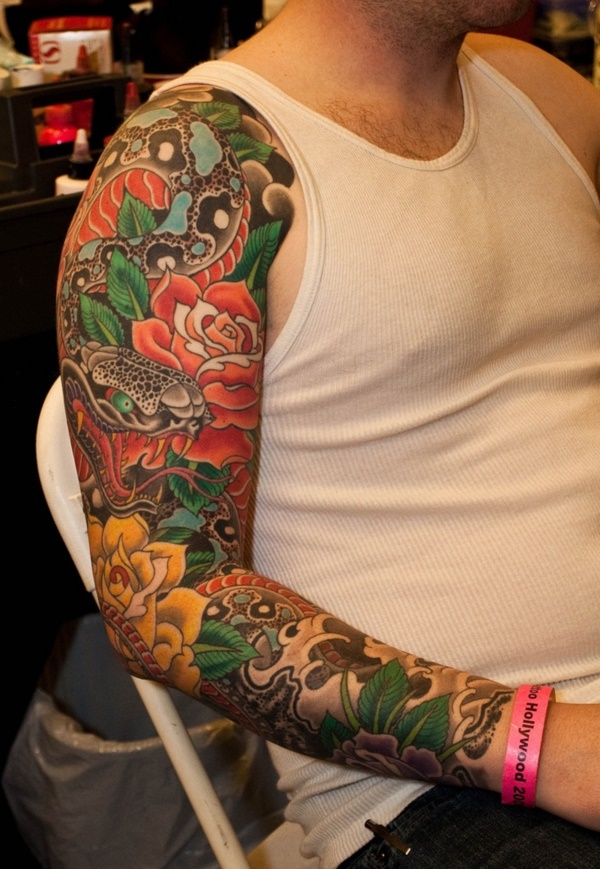
50 Cool Japanese Sleeve Tattoos for Awesomeness
Japanese tattoos are one those tattoos that look better the bigger they are. They look best when covering a large portion of the body such as the entire arm or back. You can go for a full-body tattoo - but make sure that you won't have any regrets over the design. It's impossible to cover up a Japanese tattoo. Keep that in mind.
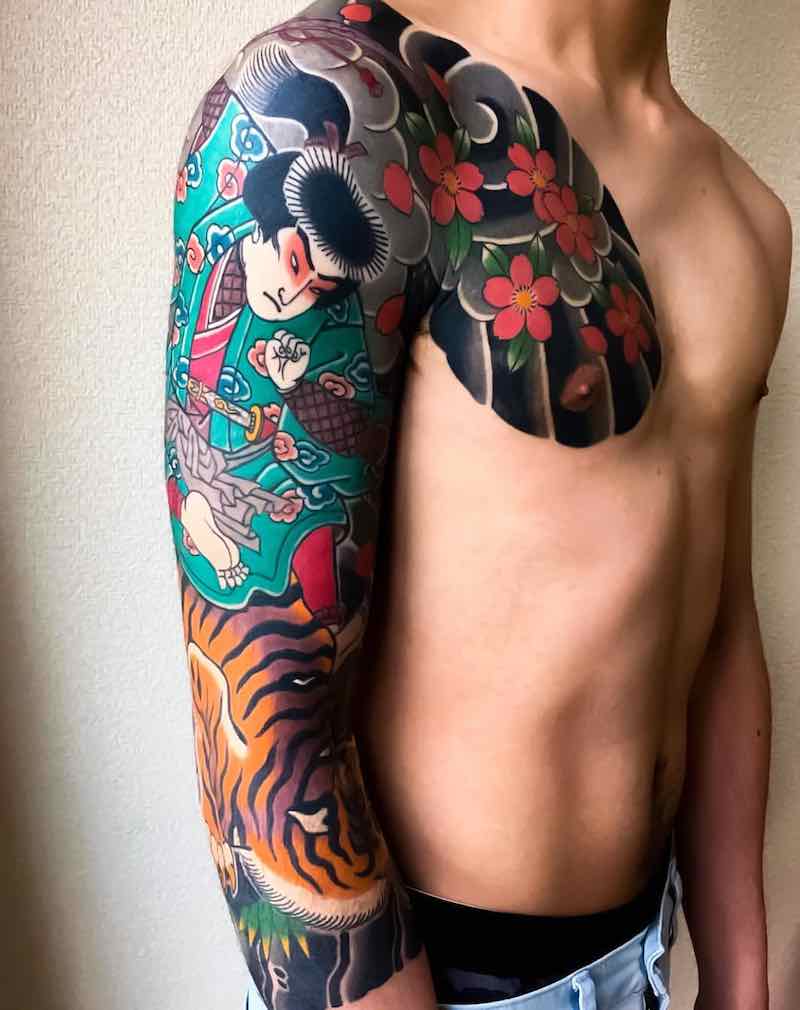
Japanese Tattoo The Ultimate Guide Tattoo Insider
16. Peony Tattoo. In many Japanese tattoos, you may see designs including the peony. It is a beautiful flower and often inked in various bright colors, making for a bold and meaningful tattoo. It symbolizes prosperity and good fortune but is also linked to life, perseverance, bravery, and honor.
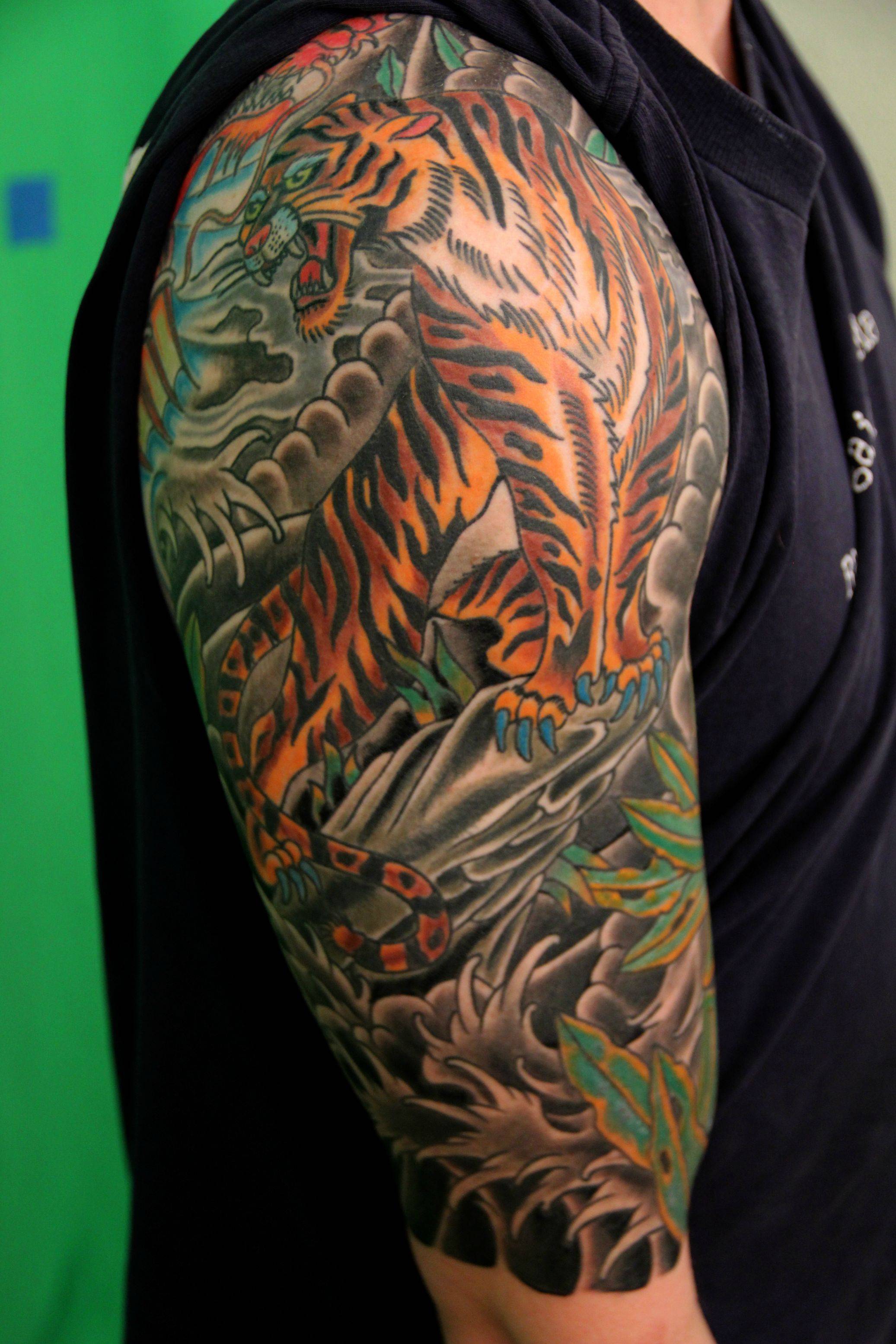
Japanese Tattoos Designs, Ideas and Meaning Tattoos For You
4. Japanese Tiger Tattoo. Like in most cultures, tigers are symbols of strength, courage, and vitality in Japan. However, Japanese tiger tattoos are also considered symbols of long life as well as.
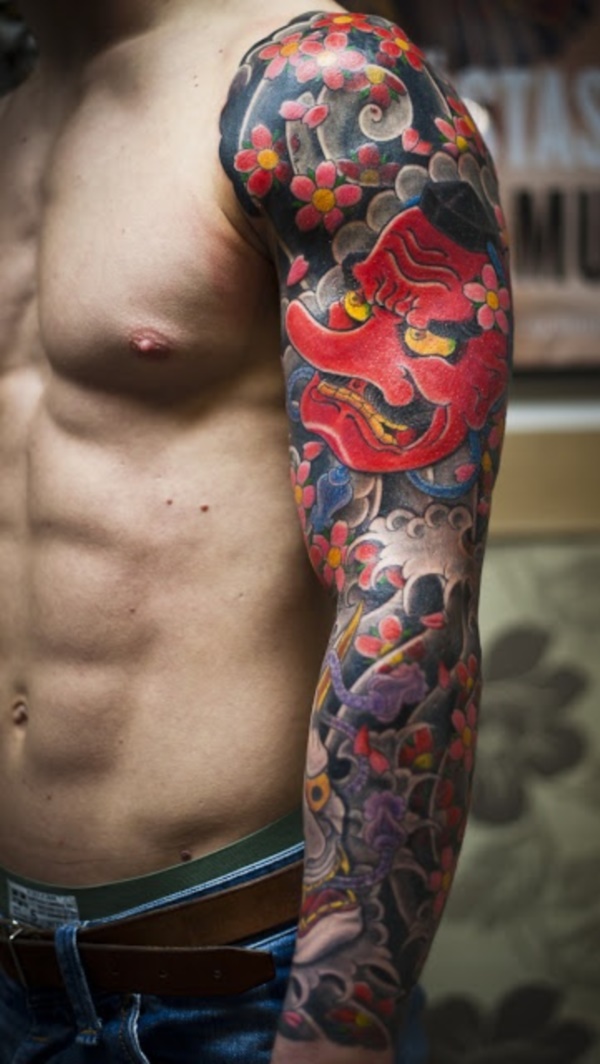
50 Cool Japanese Sleeve Tattoos for Awesomeness
Irezumi, or traditional Japanese tattoos, have a rich history that dates back over 10,000 years. Throughout the centuries, Japanese tattoo artists have honed their craft, passing on the traditional tebori method from master to apprentice.